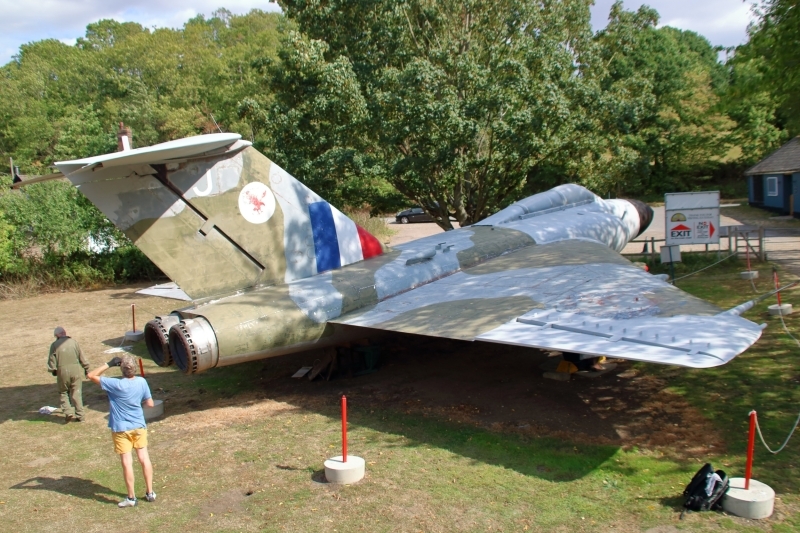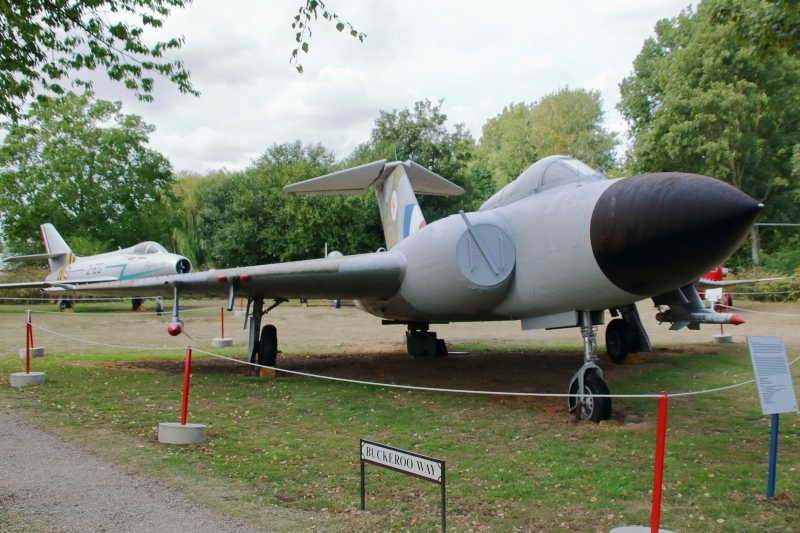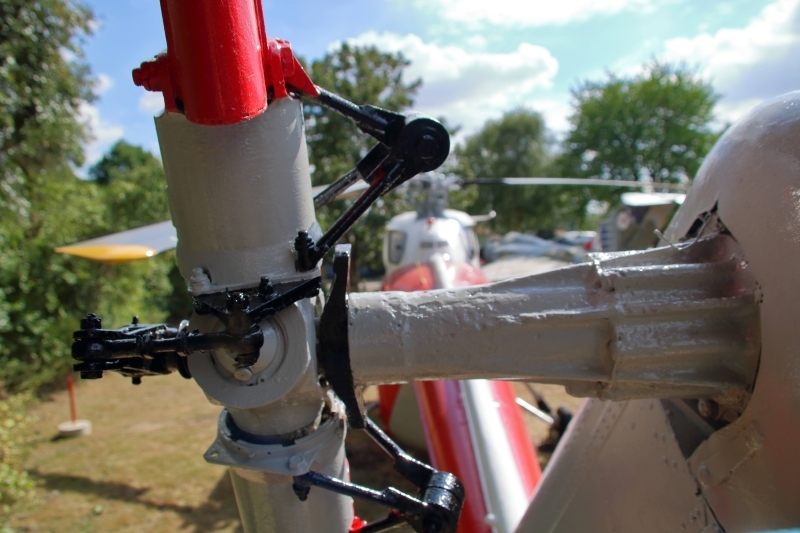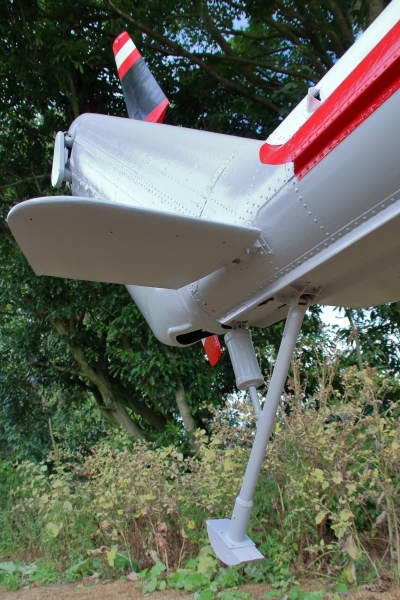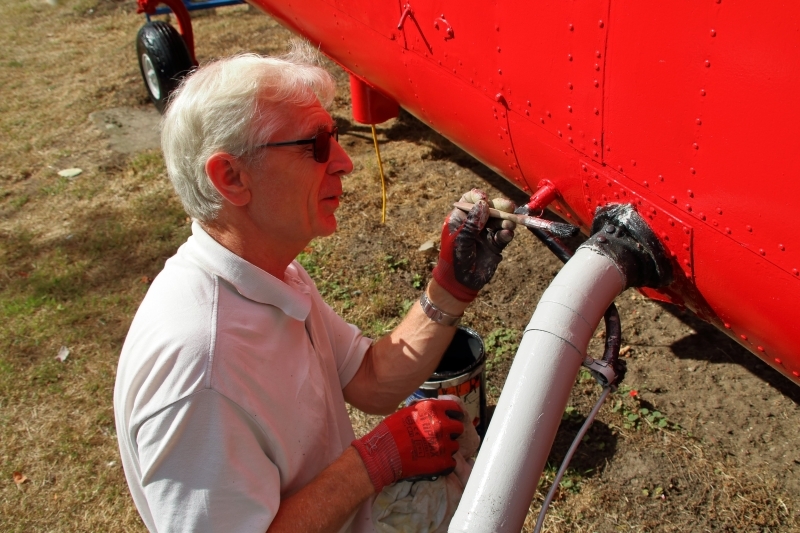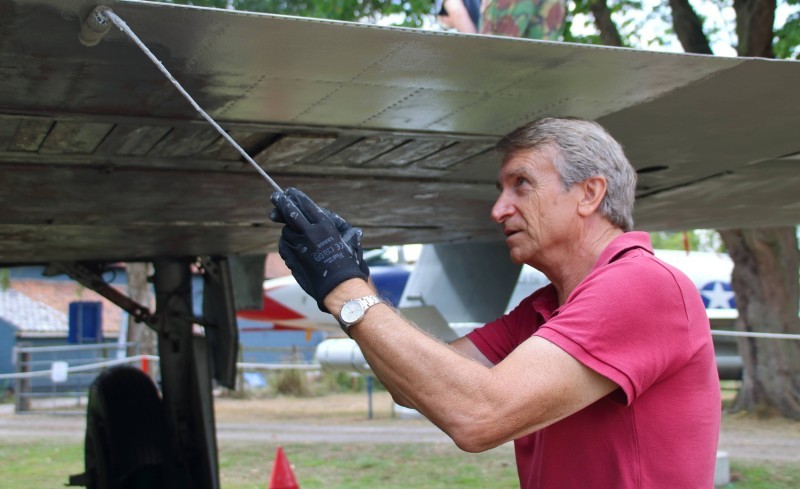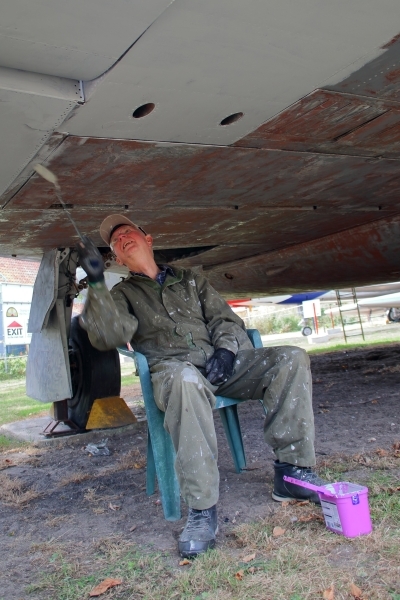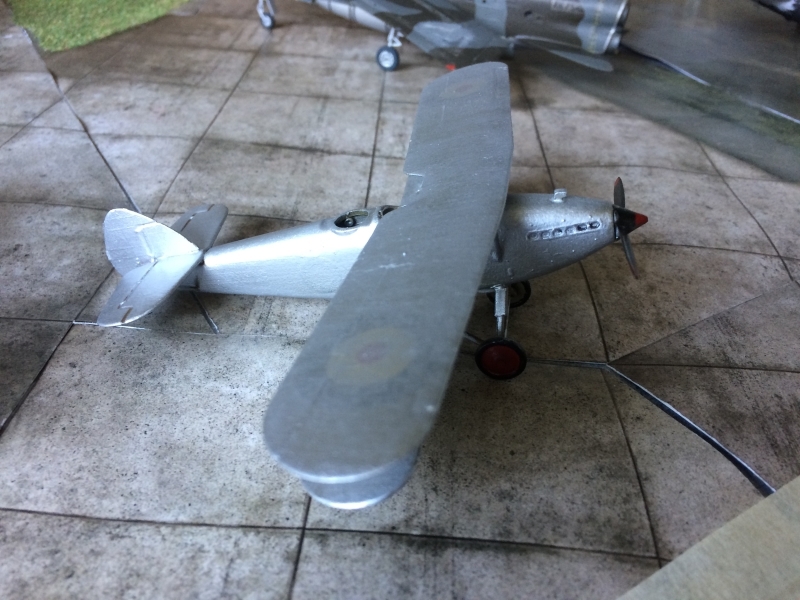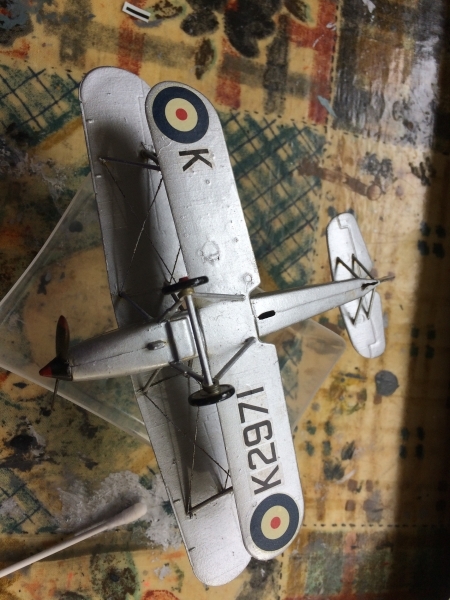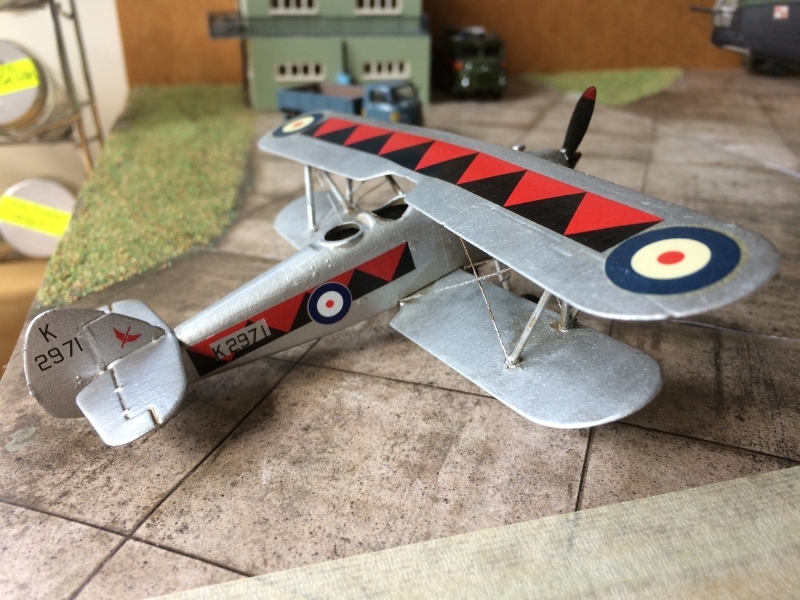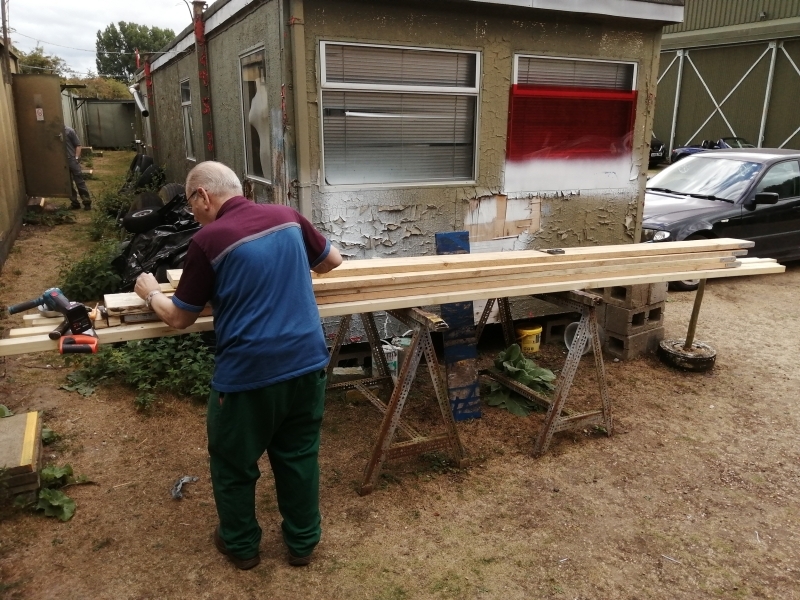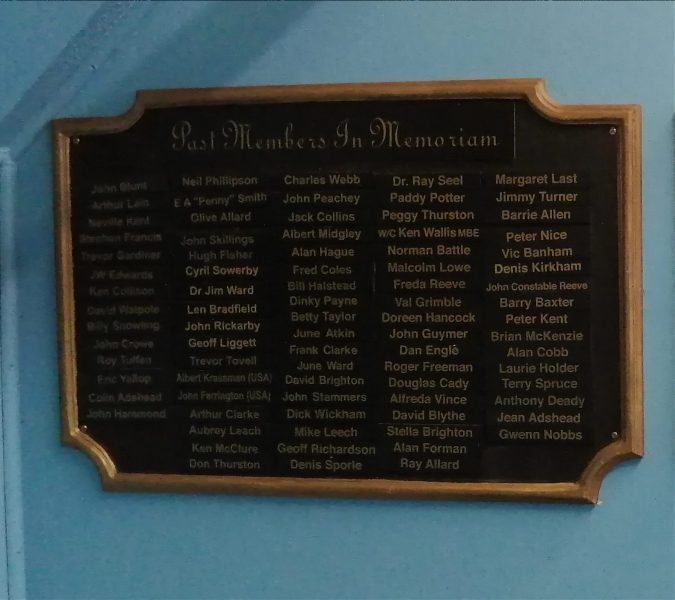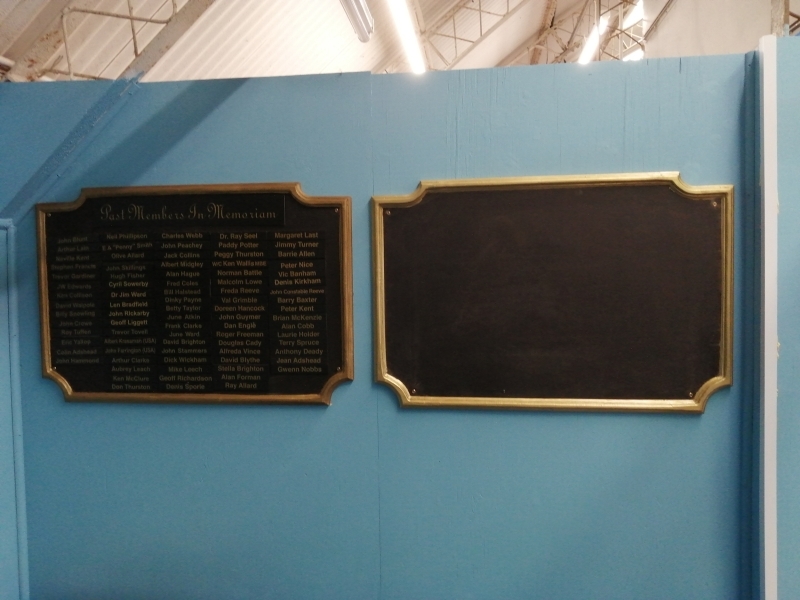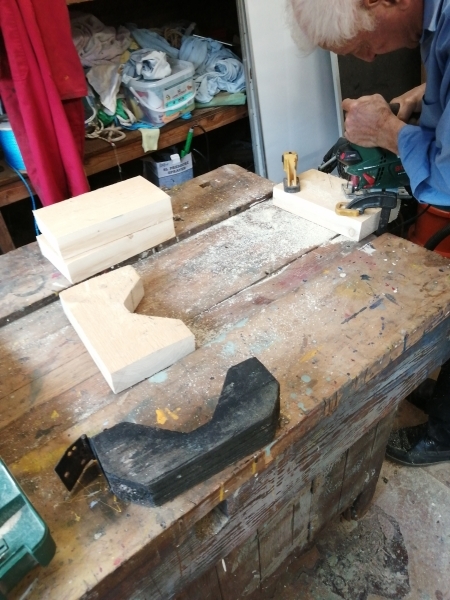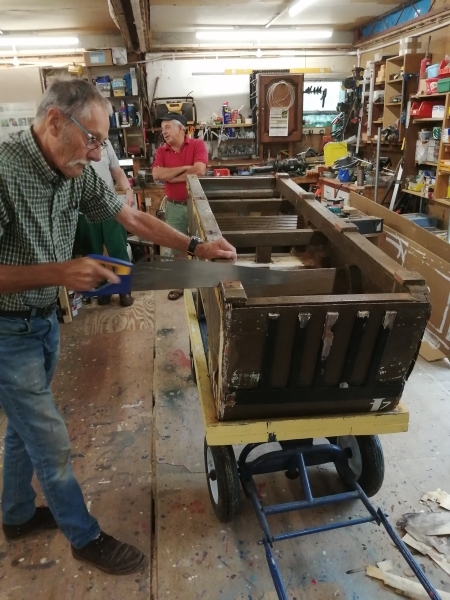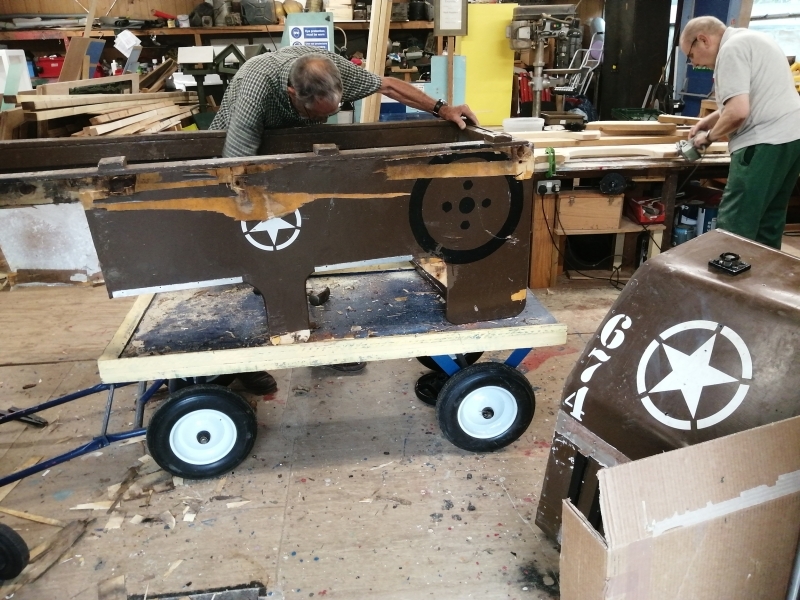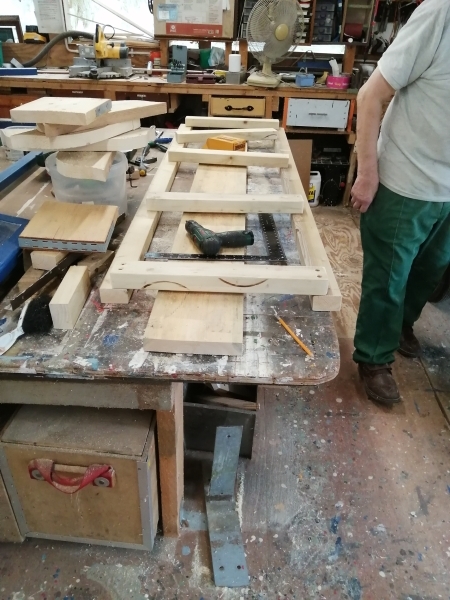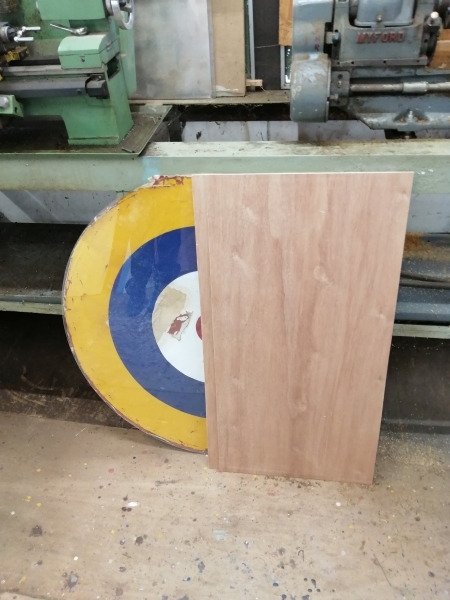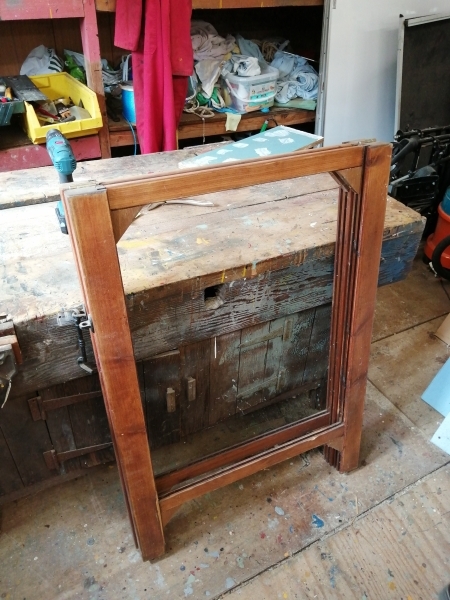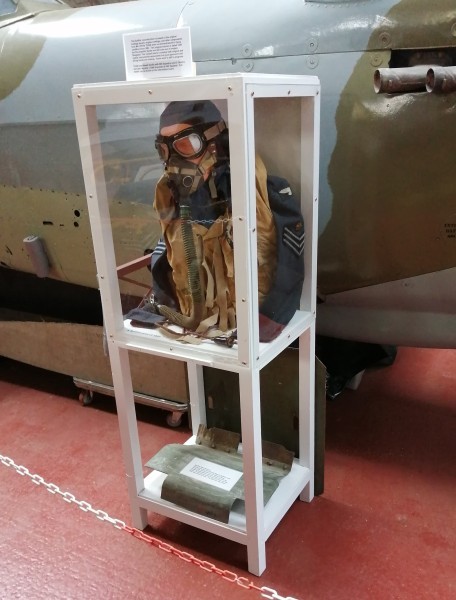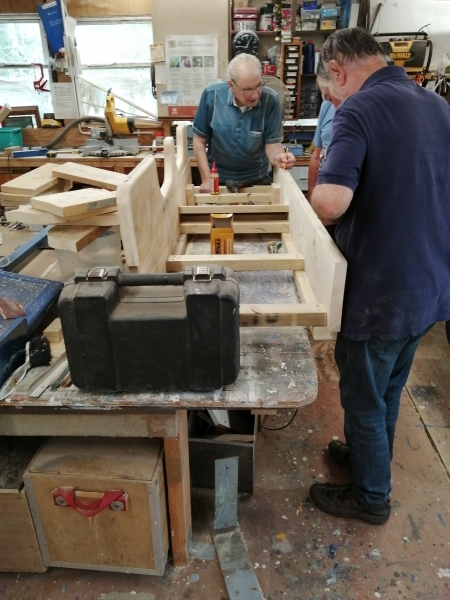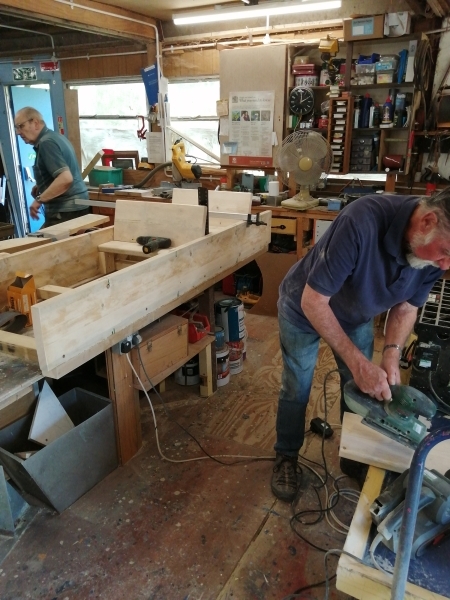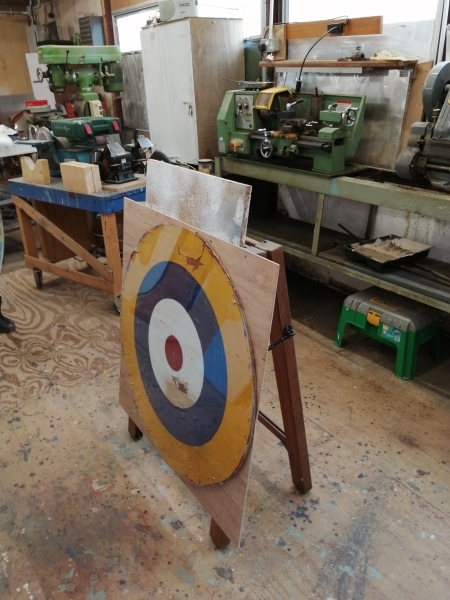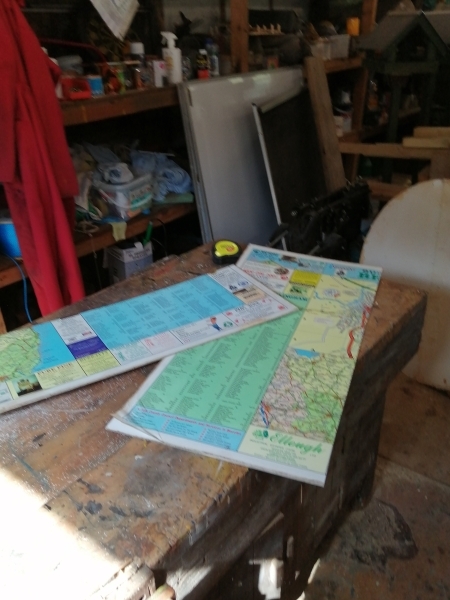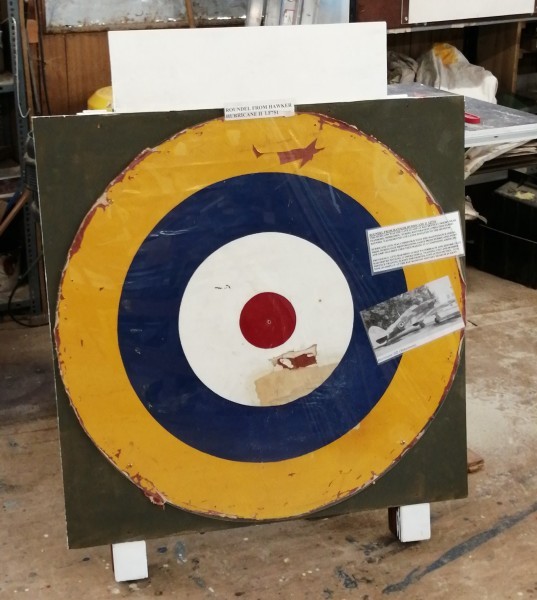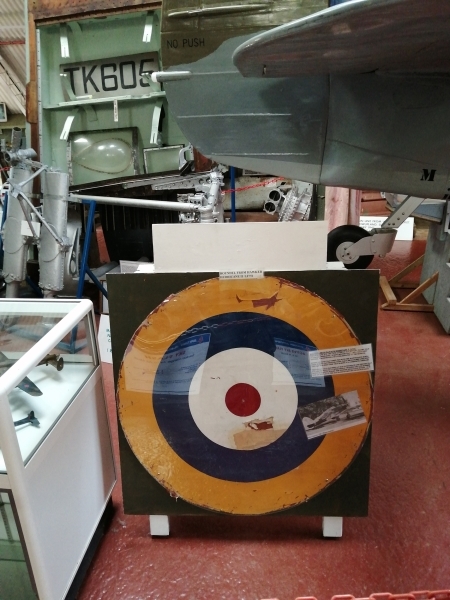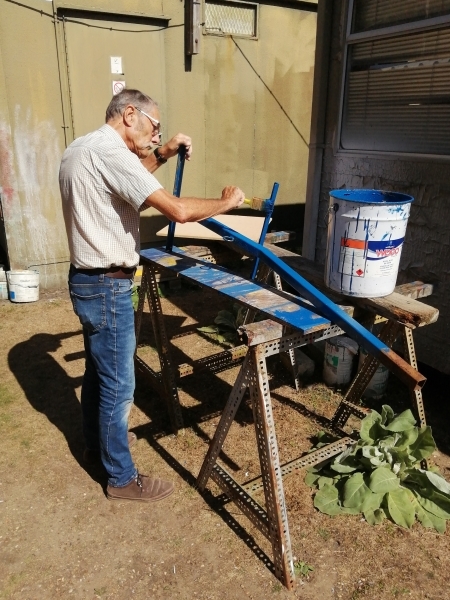NASAM Update as of the 7th Sep 2022
[joli-toc]
General Updates
Here we are again, another edition of the Online Flier. This time we have updates from Museum teams and sections, including Barry in the Paint Team, who says that the team have finally got around to painting some of the aircraft in the lower compound.
Malcolm continues his updates on the Hart and Lightning models. We have more from Graham in Archives, who has another story from the 1943 booklet ‘Over to You’. Graham also penned a piece for the local East Suffolk Living Magazine on our 50th Anniversary, and you can find a link to that below.
Michael F provided a two-week update from the Chippies Workshop on their busy schedule between bouts of tea drinking. It is worth noting that if you like tea (or coffee), then copious free cuppas are always on tap for Volunteers at the Museum. And, if you would like to partake in the free cuppas, details on volunteering can be found in the “Are You Thinking Of Helping ??” section at the foot of this blog.
![]()
50th Birthday Celebrations
The Museum will celebrate its 50th anniversary on Sunday, the 18th of September, 2022. We will publish a special blog next week showing what will be happening on the day. The East Suffolk Living Magazine has an article written by Graham about the day in the latest edition. The article can be found on the following link, where the article can be found on page 7. East Suffolk Living Magazine
![]()
Scout Activities Day
 Just a little forward notice that there will be two Scout Activities Days at the Museum in September/October. The two dates are:
Just a little forward notice that there will be two Scout Activities Days at the Museum in September/October. The two dates are:
- Saturday the 24th of September 2022 and
- Saturday the 29th of October 2022.
The Museum will be open on these dates, but certain sections of the Museum will be closed for parts of the day.
Pete S
![]()
Painters Update
23/8/22 – STOP PRESS: Painters actually seen doing some painting!
Yes, folks, down on Buckeroo Way, after what has seemed like months of surface prep, the Javelin Team were actually seen painting the ‘Flat Iron’ this week! In the morning, the Skipper (Cliff) and Ian shimmied up the scaff’ in order to prime the top of the tail stabilisers. Later on, Ian also started priming the starboard upper wing (see Javelin Repaint 26 pic, although it’s a bit hard to distinguish between the existing ‘camo’ and the new grey primer). Meanwhile, upfront, Gwen started priming from the nose cone back down the fuselage (see Javelin Repaint 27 pic). They’ve started, so they’ll finish (sometime in the next few weeks).
Next door, in Whirlybird world, it was detailing week (aka the fiddly bits week). Down the back, Barry painted the tail rotor hub in Light Aircraft grey, before picking out the connecting rods in black (see Whirlwind Repaint 38 pic). Down on the ground, Mark painted the rear undercarriage assembly in Light Aircraft grey (see Whirlwind Repaint 39 pic) and the front legs in a combo of Post Office red and silver aluminium tape. In between undercarriage leg coats, Mark also wood primed the new wooden tail skid (courtesy of the Chippies), ready for a topcoat of red and white hoops next week (see Whirlwind Repaint 40 pic).
(Photos) Painters Update 1
30/8/22 – It’s all in the detail!
This week down on Buckeroo Way, the Whirlwind team were entering the finishing straight. During the day, Mark and Barry attended to a number of detail items that have really started to bring the overall job together (see Whirlwind Repaint 42 pic taken at the end of the day). In the morning, Mark blacked up the tyres and rear shock gaiters (see Whirlwind Repaint 41pic), while Barry gave the various antennae and wheel chocks a coat or two of yellow. Down at the back, Barry also gave the rear skid two coats of Dacrylate white primer.
After lunch, Mark then top coated the rear skid in Dacrylate white and also touched in the white fire panel doors. He then went on to start the Clear Coat lacquering, starting at the tail rotor and working his way forward along the tail. By the close of play, half the tail had been clear coated, and the boys noticed that the lighter colours (the grey and white bits) were showing a bit of a yellow tint. We’re hoping that this is just temporary and that by the time we rock up next week, it will have dried clear! While Mark was getting lacquered, Barry spent the afternoon blacking up the very tired-looking window rubbers on the port side.
Over on the Javelin, the ‘A’ team (Cliff, Gwen and Ian) were cracking on with the grey primer. With plenty of aircraft to go around, Gwen concentrated on the upper starboard wing (see Javelin Repaint 28 pic), while Ian worked on the corresponding undersides (see Javelin Repaint 29 pic). On the port side, Cliff was spotted taking it easy (again), rocking back in ‘the seat of choice’ while he attended to the under surfaces in what would seem to be a very casual painting style (see Javelin Repaint 30 pic).
By the end of the day, about 25% of the airframe had been primed (see Javelin Repaint 31 pic), the saga continues…
Barry
(Photos) Painters Update 2
![]()
Model Maintenance Unit
Continuing from the last report, the “yellowed” Hawker Hart (Airfix 1/72 late 1950’s) has received a new coat of paint and decals depicting an aircraft of 601 Squadron which flew from Hendon c.1935. The squadron markings came from a Modeldecal set which unfortunately did not provide the roundels or the serial numbers. These were sought from my decal spares, the serial numbers created from individual digits, which needed a lot of patience to line up. A good 2 hours were taken up to apply all the markings (see Model Hart 03 thru 05).
The other photos show the Lightning F6 “AK” after the top wings were repainted and new decals applied. The other Lightning, F.1A, is a refurb of a model from the old model den display, originally marked up as an F.2.. The original paintwork was very poor, although the actual model was in good condition. A full repaint completed. Having no decals for an F2 in my spares, I have used an old Modeldecal set of an F.1A (outwardly similar to F2) belonging to 65 (shadow) Sqn Coltishall 1974. The model is the old Airfix F.1A anyway (see Model Lightning 03 and 04).
Malcolm G
(Photos) MMU
![]()
From The Archives
OVER TO YOU #3
Continuing with tales from the booklet ‘Over to You’. which was almost overlooked in the magazine store, we have another tale from fighter pilots on their nightly sorties.
 Each of the tales in the book contains the same introduction and which speaks for itself:
Each of the tales in the book contains the same introduction and which speaks for itself:
THE legendary days of Dunkirk and the Battle of Britain; the winged victory in North Africa; fighter sweeps over France; bomber sorties to Germany and Italy; night fighting, train-busting, intruder operations; the work of Ferry Command and the training of pilots in Canada; the remorseless harrying of U-boats; the adventures of air crews forced down in ocean or desert–these are the subjects of “Over to You”, a collection of stories chosen from over 900 broadcasts given on the BBC by R.A.F. officers and airmen between March 1942 and May 1943.
This tale would appear to be from a two-seat night fighter aircraft, although what it was is never made plain. For a night fighter to shoot down an enemy aircraft, a lot has to happen correctly, and there has to be a little luck to grease the great deal of skill and tenacity involved from the crew. This crew scored four German aircraft in a single night…
Four in a Night
The curious thing about the first one I shot down was that although London was throwing up a terrific amount of flak and there were any number of searchlights about, I don’t remember seeing one of them. I was looking up all the time to find the enemy silhouetted against the bright moonlit sky.
We’d just popped above a thin layer of cloud and there was the Dornier, a sort of grey colour. I fired a long burst, and saw an explosion behind the pilot’s cockpit. It seemed to go straight down, and I tried to follow, so steeply that the observer came out of his seat. When the Dornier crashed. three brilliantly white blobs appeared to jump out of the ground.
That was Dornier number one.
The next patrol nothing happened at all, except my observer complaining about the hardness of his seat.
We got Dornier number two during the second alert. It must have been about four in the morning. He was travelling very fast and jinking violently. He didn’t keep a straight course for more than a few seconds at a time. But there was no cloud about now, it was a good night for interception, and I managed to get in a fairly long burst. He caught fire and slowed up very quickly. I got so close to him that I got caught in his slipstream and rolled onto my back, but I managed to avoid colliding with him. By the time we were right way up again he’d hit the ground and was blazing away.
Then came Dornier number three. Again I got in a long burst amidships. There was a yellowish explosion, and down he went. As he did so he fired about a séconds burst, two streams of red tracer, but they went nowhere near us.
Number four was a Junkers 88, and the most spectacular of the night. We found him somewhere in the Croydon area. My cannon shells set both his engines on fire, and flames spread along the wing and back to the fuselage.
They lit up the sky so clearly that we could see his black crosses. And we saw four of the crew bale out, one after the other. As it went down you could see all the streets lit up, and when it hit there was a terrific flash.
Well, that was that. Four in a night.
Home we went, pleased of course, but chiefly wondering what sort of luck the rest of the squadron had had.
Graham
![]()
Chippies Update
An update from the Chippies Workshop where a Phoenix arises from the (not yet) ashes
23rd August – another casualty of the constant wear and tear had to be brought into the workshop last week. The children’s Jeep, which was outside the Air Sea Rescue Building, was back again. We’d made some repairs earlier this year, but the erosion of weather and children had done for it: its plywood skin was delaminating and was becoming dangerous for the kids. “Doctor” Dave H pronounced it uneconomical to repair, so worked out how much it would cost to build a new and stronger one. The committee agreed it was worth it, so Dave placed an order for new timber, which arrived this morning. Ever eager to start a new job, Dave started stripping off the metal ends of the scaffolding boards which he is using to make the Jeep. This one is going to last a long time (Childrens Jeep 01).
Tug was back in action, taking the display case for “Spitfire Man” to give its top coat of white (Spitfire Man Case 04). Behind the case is a large sheet of MDF, which Dave had ordered as part of the load. This we planned to use as a new Memorial Board, upon which the names of volunteers who have left us would be honoured. The existing board in the Ken Wallis Hall is full, and sadly there are several more names to go up. Two years ago, the Chippies refurbished a second board just for this event, and then … it disappeared. So Ash and Michael F today started the process of building a new one. We had finished measuring up the existing one, and we were scratching our heads thinking about how to make the complex edging when we decided to have “just one more look”. Amazingly, stashed by the Anson was … the refurbished Memorial Board. Having picked ourselves up off the floor and several revitalising cups of tea, Steve B asked us to put both Boards up on the stage to become the Roll of Honour alongside the screen that plays a video of the history of the Museum (Memorial Board 01 and 02).
Outside, Ivor and Mal have been cleaning up and painting the Vulcan undercarriage and its cradle. Ivor pointed out to us that the wooden blocks supporting the trunnion were somewhat worse for wear. Ash cut two new ones (Vulcan Undercarriage Cradle 01), but we decided that fitting them could wait as we couldn’t lift the undercarriage to fit them using manpower, and it was somewhat late in the day.
25th August – Dave H decided that he wanted the aluminium “bonnet” from the old Jeep on his new one. So Les and Michael F set about dismantling it (Childrens Jeep 02). Once we started, we realised that Dave had built it like a tank. Although it was rotten, it was incredibly tough. But as sections came away, we added them to the pile of old, unreusable wood outside the workshop. This is, of course, the firewood pile for the traditional Chippies woodburner, which keeps us warm in the cold winter days.
Alongside us as we took the old Jeep to pieces (Childrens Jeep 03), Dave started building the new Jeep – phoenix-like it grew from the (not yet) ashes of the old one. By the end of the day, he had the new jeeps base, or even chassis, ready (Childrens Jeep 04).
30th August – this morning, Steve B brought into the workshop an RAF roundel which had come from a Hurricane II LF751 that had become a gate guardian at RAF Bentley Priory (Hurricane Roundel 01). When the plane was refurbished, the roundel came to the Museum. At the time, we backed it with hardboard to strengthen it, covered it with perspex for protection and hung it from the ceiling in the Hanger. Unfortunately, one of its supporting wires snapped, and Steve and Dave D had recovered it before it fell. Steve wanted it remounted so it could become part of Merlin Corner. Michael F suggested that visitors would get the best view of it at floor level if tilted slightly backwards. Ash found what appeared to be an old sandwich board stand which is just the right size (Hurricane Roundel 02). Next, we hunted out some offcuts of plywood, eventually deciding upon two pieces screwed to the stand. A short piece on top for the information about the roundel, and it was ready for painting.
Our next tidying-up job was to fit the perspex front and sides to the “Spitfire Man” display case and deliver it to Ian H in the Hanger. Ian promptly inserted “Spitfire Man” into his case, with a Spitfire seat on display on the lower shelf (Spitfire Man Case 05). Another satisfied customer.
Another satisfied customer was Ivor, who took away his Vulcan undercarriage blocks. Having jacked up the undercarriage and swapped the blocks for the rotten ones, pronounced them perfect.
Dave H and Morris started the next stage of building the new Jeep. They made each side from two scaffolding boards (Childrens Jeep 05 and 06); the upper one was cut out to make “doors”. Further boards provide seats and dashboards, as well as holding and strengthening the whole bodywork. They glued the lower side board to the chassis and then screwed it to the seats.
1st September – Les started the day by taking the roundel off its backing ply and giving the ply a nice coat of camouflage green paint. When it was dry, he reassembled it, ready for delivery to the hangar. He was going to paint the back as it would be visible to visitors, but we decided that it would look better filled in. An old tourist map of Beccles and Bungay made of sheet plastic was looking for a home. So Ash cut it down to size and slide it into the convenient slots in the rear legs. Job done, he delivered the roundel on its new stand to Merlin Corner (Hurricane Roundel 03 thru 07).
Ash and Michael F were onto the next challenge. Ian H has a Spitfire IX propeller blade which he wanted to be taken off the floor and mounted on a stand. We measured it up on Tuesday and discussed options with Ian for the mounting. Our thoughts were to keep it horizontal but build a wooden cradle for it, similar to the missile stands we built a couple of months ago. As we designed this cradle, it was getting complicated, so we took a cup of tea and thought about alternatives. Inevitably this leads us to rummaging around at the back of the Engineering Workshop. Some car ramps were the right size and would be strong enough but too low. But then we found a spare metal signage stand of the kind we put information about our aircraft on, perfect for height and angle of slope to display the blade. We found a sheet of MDF exactly the right size for the backing, and Les added a block of wood to stop the boss from sliding forward. Once more, Les did his magic with the dark blue paint (Spitfire IX Prop Stand 01), and after a couple of hours in the sun, Ivor and Michael set it up in the Hanger next to the Spitfire (Spitfire IX Prop Stand 02).
Michael F
(Photos) Chippies Update
The Repeat Info
The repeat information is still here I’m afraid, and I make no apologies for keeping his section in our blog. We are a charitable organisation relying on monies from the public to keep us going. Any help we receive is gratefully accepted and enables the museum to continue in our mission “To conserve, preserve and promote the history of aviation in East Anglia, whilst providing a fun, family-friendly and interactive museum, promoting education and remembrance of the events of the past“.
Are you thinking of helping ??
 We obtain most of our finances by donations and by membership fees. We save money by having a dedicated group of volunteers that keep the museum and the exhibits both manned and maintained. We hope therefore a few people may consider helping in the ways below.
We obtain most of our finances by donations and by membership fees. We save money by having a dedicated group of volunteers that keep the museum and the exhibits both manned and maintained. We hope therefore a few people may consider helping in the ways below.
There are three easy ways to help: Help by becoming a Museum Member, also by Volunteering to help at the museum, or by Donating to assist in our running costs. Please click on the appropriate button below to access the appropriate information:
Keep Up To Date
![]() To keep up to date with further information, please keep an eye on our Social Media (see the Social Media buttons at the foot of this blog) or click on the button below to be notified by email of any upcoming changes by seeing the latest blog.
To keep up to date with further information, please keep an eye on our Social Media (see the Social Media buttons at the foot of this blog) or click on the button below to be notified by email of any upcoming changes by seeing the latest blog.

